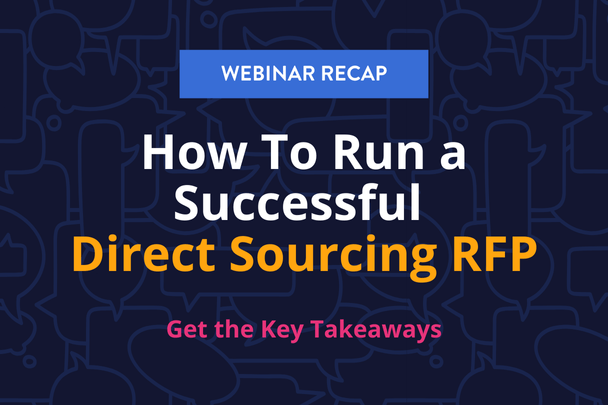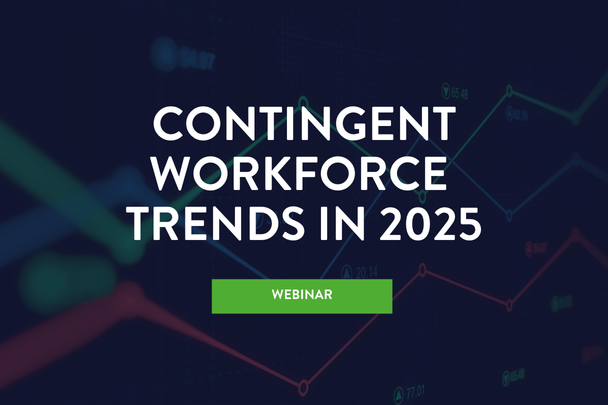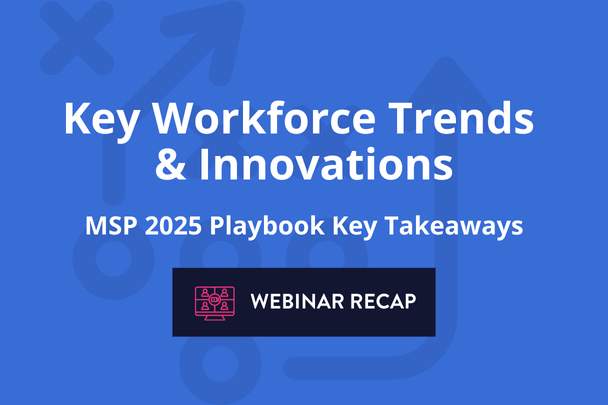What is the value of curation management for a recruitment company?
Lao Tzu said, “The journey of a thousand miles begins with one step.” That first step may seem like the toughest, but how many people have DIY or craft supplies (or dreams) tucked in a closet or a corner, telling a tale of unfinished projects and unrealized ambitions? Taking the first step in any endeavor is often far easier than following through to successful completion. If you think of direct sourcing as the first step in a high-potential approach to securing contingent talent, then curation is the critical follow-through.
Leveraging the power of a well-respected brand to attract contingent candidates through direct sourcing can lead to higher-quality hires, greater engagement, and stronger performance. Achieving those results requires more than savvy sourcing alone, however. Once you have sparked candidate interest, you need to nurture it through talent curation.
What is talent curation?
If you look up “curation” in a dictionary, you would find references to selecting, organizing, and then looking after whatever it is you had selected and organized. In direct sourcing, you gather high-potential employment prospects for contingent roles in a branded talent community. The power of the brand attracts talent to the talent community, but it will not necessarily sustain that attraction without proactive talent curation to engage candidates. The talent community curator, typically a recruiter, is responsible for not only identifying potential matches of talent to opportunity, but also ensuring talent is still interested when an opportunity arises.
How does talent curation work?
There are two primary functions in talent curation: talent pooling and recruitment marketing. Both are designed to strengthen engagement with candidates and accelerate the hiring process.
Talent pooling. In talent pooling, the recruiter organizes the entire talent pool into clusters or smaller groups, based on job-related parameters. These might relate to job function (such as finance), skills (taxation or auditing or a particular software tool), location (West Coast, local, or remote), experience (could reference the number of years or perhaps be based on industry knowledge), salary ranges, etc. By taking the time to segment the talent pool in this way, the recruiter can engage candidates with targeted communications and more quickly respond to job requisitions with high-value matches. Without segmentation, finding a suitable candidate would be more like trying to boil the ocean. The job of segmentation might seem overwhelming when your talent community is initially launched, but on an ongoing basis, a recruiter can vet each new candidate that joins the talent community to identify placement in the appropriate talent pools.
Recruitment marketing. Once prospective contingent candidates walk through the gate of a branded talent community, you must build on their initial interest. You need to engage with candidates and strengthen relationships. Recruiters do that through three elements of strategic candidate communications:
- Automated recruitment marketing. This typically takes the form of a monthly newsletter with information about the company and the industry, workplace updates, company outreach to the community, employee volunteer activities, job profiles, contingent employee spotlights, etc.
- Job digests and timely opportunity alerts, well matched to the candidate’s profile.
- Targeted content via email, chat, or SMS message that looks like one-on-one communications with the recruiter. As an example, the message might say, “I’ll be hiring 5 accountants in the next few weeks, so be sure to check your profile and make sure it’s up to date.”
The act of finding contingent employment is highly transactional and often comes with a short shelf life. Once a candidate secures an assignment, their interest in the talent community may wane, unless you give them reasons to stay. Strategic marketing communications can help sustain candidate interest. This is especially valid when candidates have been pre-vetted for opportunities.
How does talent vetting work?
Talent vetting is another level in the selection process. It relates to candidate screening as a means to identify hard and soft skills. At a minimum, that means a candidate’s resume or profile has been reviewed by the recruiter. A higher level of vetting might involve a preliminary interview with a recruiter before being matched to any opportunity. If the direct sourcing technology is sophisticated enough, the system will even score the candidate before they make that human connection via a phone screen or video chat with a recruiter. Not all candidates are pre-vetted in this way, but when you have a large talent community, any preliminary selection and screening work will help speed up the hiring process and result in better matches.
What technology should we use to curate talent?
Direct sourcing solutions are specifically engineered to increase your candidate reach, your employer brand awareness, and your reputation as an employer of choice. They offer seamless integration within the existing human capital management ecosystem, whether via HRIS, VMS, ATS, corporate career sites, career portals, or social media. Consistently recognized leaders in the direct sourcing space include TalentNet, LiveHire, WorkLLama, and WillHire ― all of which Atrium partners with to support clients. Each offers branded total talent engagement platforms, supported by powerful AI to deliver high-potential matches of talent to opportunity.
Before shopping for a dedicated direct sourcing technology solution, first explore the capabilities of existing software solutions. It is possible to build a solution by combining CRM (candidate relationship management) software with your ATS to manage direct sourcing of contingent talent. Depending upon the extent of built-in capabilities within these two tools, you might also wish to leverage best-of-breed applications for pipelining, recruitment marketing, email marketing and SMS text, chatbot, etc.
Beyond the technology itself, consider how you will manage direct sourcing. Will you add it to the to-do list for inhouse recruiters or outsource it to a workforce solutions partner, such as an MSP? (Watch for an upcoming post on the value of partnering with an MSP to optimize direct sourcing.)
Why is talent curation so critical to direct sourcing?
To ensure a bountiful harvest of talent to fill contingent roles, you must plant your seeds in fertile ground and then nourish them through talent curation. The idea of a talent community is not new. Employers have been using them for more than a decade to identify job candidates who express interest in an organization. Early iterations, however, were little more than listservs, designed to push out job opportunities that may not have been well matched to candidate capabilities or expectations. Results were predictably spotty. Even today, it is impossible to build a high-quality database of candidates, easily matched to available roles, without talent curation. When you take proactive steps to engage the members of your talent community, you increase the probability that candidates will respond favorably to your opportunities. That allows you to quickly shortlist candidates for hiring managers as soon as a need arises.
Reaping the benefits of talent curation
One of the premiere KPIs in any contingent talent sourcing program is speed of hire. The faster you fill contingent roles, the more agile the organization and the better equipped you are to take advantage of market opportunities. Battling with speed for dominance in the results column of any talent sourcing program is quality. A well-curated, branded talent community will allow you to more quickly and effectively source contingent roles with high-quality talent.
You can learn more by accessing our on-demand talent curation webinar. It features an outstanding panel of industry experts who share their insights on the power and potential of talent curation and direct sourcing. Additional information and insights can be found here.








